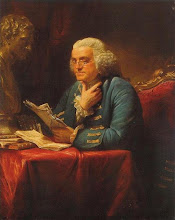Just before the turn of the new century I began to concern myself exclusively with Engine Chess. By the term, (engine chess) I mean one chess program playing another chess program. The winboard GUI had facilitated this but it was not until the Arena GUI was made available to the public in 2001 that we had a graphic interface specifically designed to play one chess engine against another. Arena not only was compatible with the wiboard protocols but also the newer UCI engines. Everything was configurable; the time controls, the number of games in a match, the engine parameters and of course the opening books along with their weighted learning capabilities.
One could now take their computer hardware, chess engines and opining books onto the internet and play against other computers and their human handlers. Commercial chess programs, particularly Chessbase’s Fritz 7-8 came along with strong client based engines and very pleasing graphics. In September of 2001 Chessbase’s player site, Playchess.com opened a room specifically for engine play and competitive engine chess came into existences. An Elo rating system based on individual computers, programs and the way their users configured them now was possible rather than be based on how they did against human Masters, This made judgments of relative engine strength more viable and contributed to programming development.
Now I know what some are thinking that there had been WCCC tournaments held every few years since 1974. But in fact these events were and still are primarily for showcasing commercial programs and cutting edge computer hardware. In my world view, these elite events held in exotic locations do not constitute Engine Chess being played in public venues by ordinary individuals that we enjoy today.
The commercial programs quickly proved themselves to be as strong their advertising departments had clamed. Fritz, Shredder, Junior, Hiarcs and many others all proved that they could play hauntingly beautiful chess. In early 2006 Vasik Rajlich’s UCI engine Rybka (little fish) rose to the top and is currently the dominant chess program in the world.
One of the things I realized early about engine chess was that all things be equal, (both players having similar hardware and using the strongest program available) it is the opening book that made the difference. Not only does the opening book set the tone of the game but its manipulation is best way for the human operator to communicate with his program. Even if an engine has detailed configuration setting, (material value of the pieces, king safety, aggressive vs. defensive stile) these are esoteric and communicate with the program in a none human way. Only the engine book guided by a human intelligence can channel a chess engines positional decision making power to its fullest potential.
It is possible to move a huge mound of dirt by hand. Using shovels, wheelbarrows and human muscle. History is replete with such accomplishments. Today however we attack the mound with bulldozers and trucks making short work of it. It is no disrespect to the laborers that would have done this feat in the past. As we move forward in 21st century applying these computer programs, theses engines of the mind to our beloved game of chess we mean not to diminish the accomplishments of the great human players but only to advance the game , the art that is chess.
Sunday, January 20, 2008
Subscribe to:
Post Comments (Atom)




No comments:
Post a Comment